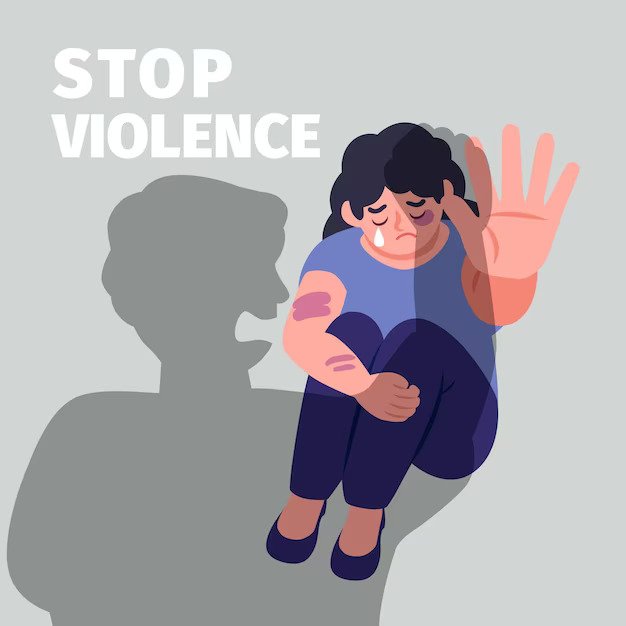Scenario of Child Sexual Abuse in India
Child sexual abuse, commonly referred to as molestation, is a grave offense that poses a significant challenge worldwide. The experts at Yourlawyer display compassion and empathy towards clients, ensuring a deep understanding of their situation and maintaining utmost confidentiality while handling cases in accordance with the POCSO Act.
Effects:
- Post-Traumatic Stress Disorder (PTSD)
- Trust and relationship issues
- Behavioral problems
- Mental health disorders
- Impact on self-development
How Y/our Lawyer helps in null Sexual Abuse ?
Our consultant will discuss the issue over a 24X7 helpline .
Step 1
Our consultant will discuss the issue over a 24X7 helpline .
Step 1
A detailed analysis of your case will be done by an experienced lawyer.
Step 2
You will be able to track your case with a personal account
Step 3
Overview
This comprehensive article delves into the specific landscape of child sexual abuse in India, shedding light on its profound impact on children. It provides a succinct exploration of various forms of sexual abuse experienced by children. Furthermore, it delves into the significance of the POCSO Act as a critical legal provision in addressing child sexual abuse. The article further elucidates the step-by-step procedure for reporting instances of child sexual abuse perpetrated by any individual, ensuring a clear understanding of the necessary actions to protect and support victims.

child sexual exploitation in India

Sexual exploitation encompasses acts that involve the forced or non-consensual engagement in sexual behavior towards an individual.
Sexual abuse remains a pressing and significant issue in India, with children being the primary victims. Disturbingly, the majority of abusers are known to the children, rather than strangers, whether within their own homes or in external environments.
In addition to children, women also face sexual abuse and harassment in their workplaces. However, due to their vulnerable and trusting nature, coupled with their young age, children make up a substantial portion of sexual abuse victims.
Often, children may not fully comprehend the nature of the acts perpetrated against them, compounded by the intimidation from their abusers. Shockingly, Interpol reports indicate that India witnessed approximately 2.4 million instances of online child sexual abuse from 2017 to 2020. Disturbing statistics reveal that a child under the age of 16 is raped every 155 minutes in India.
Perpetrators of child sexual abuse are often individuals whom children trust, emphasizing the need for protection against abuse even within the confines of their own homes. Unfortunately, many cases go unreported due to fear. The long-lasting trauma inflicted upon a child as a result of abuse has profound and lasting effects throughout their lifetime.
Manifestations of Sexual Violence
The various manifestations of sexual violence encompass the following:
Physical Abuse: Most instances of sexual abuse involve physical contact between the abuser and the victim. This form includes acts such as rape, exhibitionism, touching or fondling, and sodomy. The sexual intent behind touching and kissing is also considered a physical form of sexual abuse.
Non-Physical Abuse: Sexual abuse can occur without direct physical contact. This form includes exposing children to obscene videos or pictures, sharing pornographic material, engaging in virtual sex, making lewd remarks, or engaging in voyeurism.
Incest: Incest refers to the prohibited sexual relationship between close relatives within a family, such as a sexual relationship between siblings or between a parent and a child.
Commercial Exploitation: This form involves the sexual abuse of a child by an adult in exchange for financial remuneration. The child is treated as a commercial object. Commercial sexual exploitation of children includes activities such as child prostitution, child sex tourism, and child trafficking.
Online Sexual Abuse: The recent global pandemic has seen a rise in online sexual abuse. Lockdowns and restrictions have pushed children into the digital world. Social networking sites, online gaming platforms, and other online spaces have become breeding grounds for cyberbullying, grooming, sexual exploitation, and emotional abuse, posing significant risks to younger individuals.
It is imperative to address and combat each of these manifestations of sexual violence to protect individuals and promote a safe and secure environment for all.
Legislative Measures to Combat Child Sexual Abuse.
The issue of child abuse has garnered attention from both government and non-governmental organizations. In India, several laws have been enacted to address and penalize child sexual abuse. While the Indian Penal Code covers certain aspects of abuse, it falls short in addressing offenses such as sexual assault, harassment, pornography, and violence against boys, as it primarily focuses on offenses against women. Therefore, additional statutory provisions are required to safeguard children from abuse.
To fulfill India’s commitment as a signatory to the UN Convention on the Rights of the Child, the Protection of Children from Sexual Offences (POCSO) Act was enacted. This legislation ensures a child-friendly reporting process for child abuse and aligns with Article 15(3) of the Indian Constitution, which emphasizes the protection of women and children.
Key features of the POCSO Act include:
Coverage of various offenses: The Act addresses offenses related to contact and non-contact sexual abuse, penetrative offenses, and pornography, prescribing corresponding punishments.
Compensation provision: The Act establishes provisions for compensating child victims of abuse.
Specialized courts: Courts designated as POSCO courts specialize in handling cases related to child abuse.
Mandatory reporting: The Act mandates reporting of child offenses under the POCSO Act. Failure to report such offenses can result in legal consequences.
The Act defines specific offenses and their punishments:
Penetrative sexual assault: Offenders face enhanced punishment, including life imprisonment. If the offender is under 16 years of age, the punishment is 20 years imprisonment along with a fine.
Non-penetrative sexual assault: Offenders face imprisonment ranging from 3 to 5 years, along with a fine.
Possession, display, or dissemination of explicit material involving a child: This offense can lead to imprisonment for 3 years, a fine, or both.
Use of a child for pornography leading to aggravated sexual assault: The punishment is imprisonment for 5 to 7 years, as per the Amendment Bill of 2019.
The POCSO Act aims to provide legal protection to children and ensure the prosecution of offenders involved in child sexual abuse.
Reporting Guidelines
The Act upholds gender neutrality, ensuring the protection of both male and female children, and holding perpetrators accountable for any form of sexual abuse committed against them. Offenders of child sexual abuse encompass various individuals, including relatives, public servants, management personnel, and staff working in jails or custodial institutions.
Regarding reporting offenses, every individual, including the child themselves, possesses the right to report any instance of sexual abuse experienced by themselves or others. However, it is the duty of parents or individuals responsible for the child’s custody to promptly and mandatorily report such offenses.
Typically, reports of child sexual abuse are lodged at the nearest police station equipped with a specialized unit called the Special Juvenile Police Unit (SJPU), which is trained in child-friendly procedures. In cases where jurisdiction is uncertain, a Zero FIR can be filed by the police and later transferred to the appropriate police station with jurisdiction. The complaint should be filed in a language understood by the child and recorded in the same language.
Under the POCSO Act, provisions are made for expeditiously presenting the case to the Child Welfare Committee within 24 hours of its reporting. This ensures swift action and intervention in cases of child sexual abuse.

